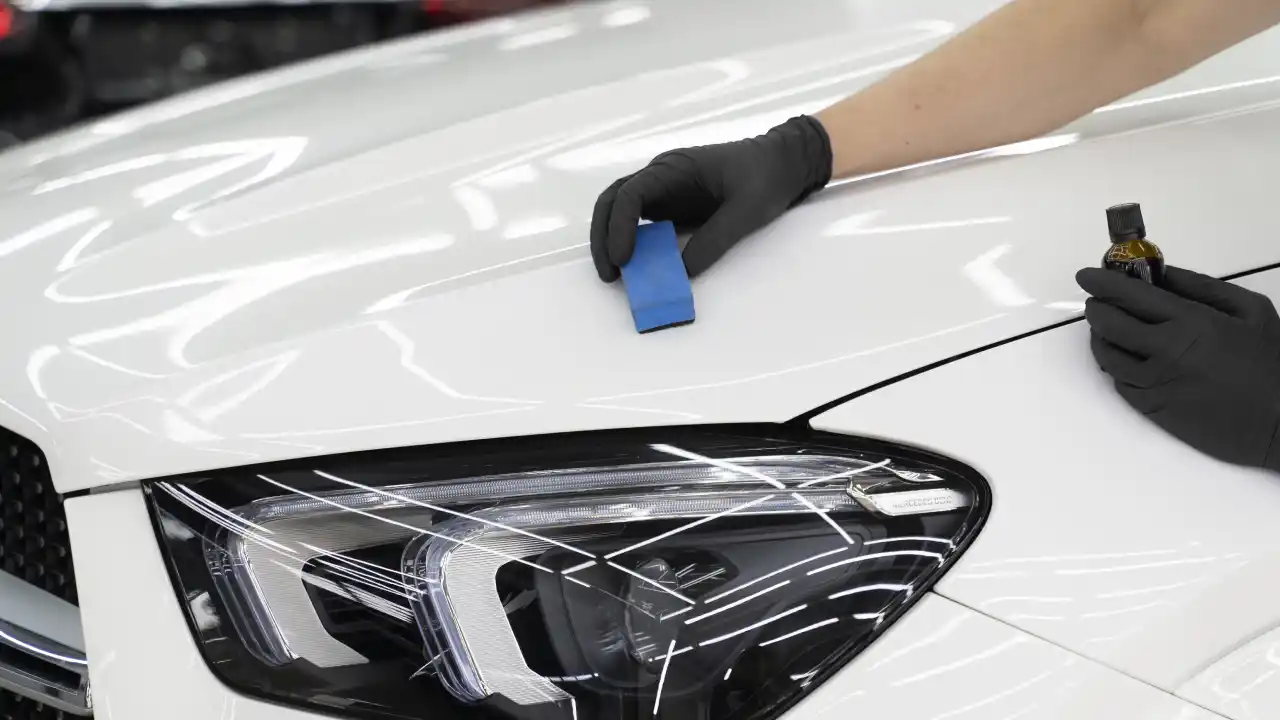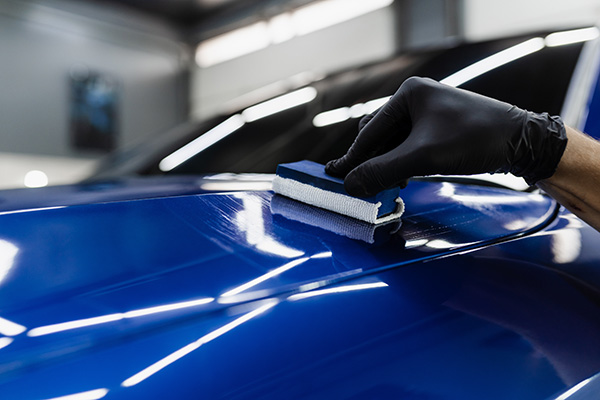The Duty of Ceramic Finish in Safeguarding Your Vehicle's Paint From Environmental Damages
Ceramic finish has become an innovative service for car proprietors seeking to maintain the stability of their vehicle's outside. By developing a robust chemical bond with the paint, this innovative innovation offers an awesome barrier versus different ecological hazards, such as UV rays, acid rain, and impurities. Nevertheless, recognizing the detailed advantages and the complexities of the application process is crucial for maximizing its efficiency. As we discover the nuances of ceramic finishing, it comes to be apparent that the selection to implement this protective procedure could substantially affect your vehicle's durability and visual.
What Is Ceramic Finishing?
Ceramic finish is an innovative fluid polymer put on the exterior surfaces of a car, developed to supply a sturdy layer of defense for the paint. This cutting-edge remedy creates a chemical bond with the lorry's manufacturing facility paint, creating a resilient and hydrophobic shield. The coating includes nanoparticles that fill out the tiny blemishes in the paint, causing a smooth surface area that boosts radiate and gloss.
Commonly, ceramic layers are readily available in numerous formulas, enabling different levels of protection and longevity. While some items can last for a number of months, others use protection for a number of years, depending upon the thickness of the application and ecological variables. The application procedure requires meticulous prep work, consisting of washing, decontaminating, and brightening the automobile's surface to ensure optimum bond of the covering.

Benefits of Ceramic Coating
Among the primary benefits of applying a ceramic coating is the phenomenal security it offers to auto paint. This sophisticated coating develops a durable layer that guards the vehicle's surface area from a variety of ecological hazards, consisting of UV rays, acid rain, bird droppings, and tree sap. By supplying this robust defense, ceramic coatings substantially reduce the danger of fading and etching, preserving the cars and truck's aesthetic charm with time.
In addition to security, ceramic layers are renowned for their hydrophobic residential or commercial properties, which push back water and dust, making it simpler to preserve a tidy lorry. This self-cleaning impact reduces the frequency of washing, conserving both time and resources. Ceramic finishes boost the deepness of the paint's gloss, resulting in a vibrant and refined look that elevates the overall look of the car.
One more remarkable advantage is the long life of ceramic coverings. Unlike conventional waxes or sealants that need regular reapplication, ceramic finishes can last numerous years, supplying a cost-effective service for automobile proprietors seeking long-lasting security. In general, investing in ceramic finishing causes improved longevity, lowered upkeep, and continual visual charm for automobile paint.
How Ceramic Covering Works
A ceramic coating runs via a chemical bonding procedure that produces a protective layer on the car's paint surface. This innovative remedy makes use of sophisticated nanotechnology, where microscopic particles of silica are put on hold in a fluid type - ceramic coating. Upon application, these particles bond with the manufacturing facility paint, developing a hydrophobic and resilient layer that enhances the lorry's surface area
The main component of ceramic layers, silicon dioxide (SiO2), adds to the finishing's strength and resilience. When healed, the finishing transforms right into a difficult, glass-like coating that shields the paint from ecological pollutants such as dust, UV rays, bird droppings, and tree sap. This molecular bond official website leads to a surface that is not just resistant to scrapes however also much easier to clean, as dust and gunk are much less likely to stick.
Furthermore, the hydrophobic homes of ceramic coverings create water to bead and slide off, lowering the possibilities of water places and mineral deposits. This safety barrier successfully prolongs the life of the paint and preserves the vehicle's visual appeal, using car proprietors a long-lasting Visit This Link option for paint defense.
Application Process of Ceramic Finish
When considering the application of ceramic covering, preparation is key to achieving optimal results. Any imperfections or scrapes need to be resolved at this stage, as the covering will bond with the surface beneath.

Ceramic finishing is after that used in small areas, usually using an applicator pad. The lorry ought to be left to cure in a regulated atmosphere to allow the finish to fully bond with the paint.
Long-Term Upkeep and Care
Attaining a successful ceramic coating application establishes the foundation for long-lasting protection, however proper upkeep is important to preserving its advantages. Normal washing is important; utilizing a pH-neutral automobile hair shampoo will aid maintain the finish's integrity without triggering damages. Avoid automated cars and truck cleans that use unpleasant materials, as they can jeopardize the coating's surface area.

Moreover, using a ceramic coating maintenance spray can improve the existing layer, supplying an added increase in defense and shine. It's recommended to do this every three to six months, depending upon ecological direct exposure.
Last but not least, parking in shaded areas or using automobile covers can stop extended direct exposure to dangerous UV rays and ecological impurities, better extending the life of your ceramic coating. By adhering to these upkeep techniques, you can guarantee visit this site right here your lorry's coating stays secured and visually appealing for many years to find.
Conclusion
In summary, ceramic coating works as a vital safety action for vehicle paint, successfully protecting automobiles from a series of environmental risks. Its ability to develop a durable hydrophobic barrier not only boosts visual charm but additionally dramatically minimizes the frequency and intensity of upkeep needed. The long-lasting nature of this advanced polymer emphasizes its value in preserving lorry stability and appearance, inevitably adding to a more sturdy and aesthetically appealing vehicle finish.
Ceramic coating is an innovative liquid polymer used to the outside surfaces of an automobile, developed to give a long lasting layer of protection for the paint. Ceramic layers improve the deepness of the paint's gloss, resulting in a refined and lively appearance that raises the overall look of the vehicle.
A ceramic finish operates via a chemical bonding procedure that develops a protective layer on the automobile's paint surface.The major component of ceramic finishings, silicon dioxide (SiO2), adds to the covering's toughness and durability.In recap, ceramic finishing serves as a crucial protective action for vehicle paint, effectively shielding lorries from an array of environmental dangers.
 Andrea Barber Then & Now!
Andrea Barber Then & Now! Kelly Le Brock Then & Now!
Kelly Le Brock Then & Now! Traci Lords Then & Now!
Traci Lords Then & Now! Brooke Shields Then & Now!
Brooke Shields Then & Now! Richard Dean Anderson Then & Now!
Richard Dean Anderson Then & Now!